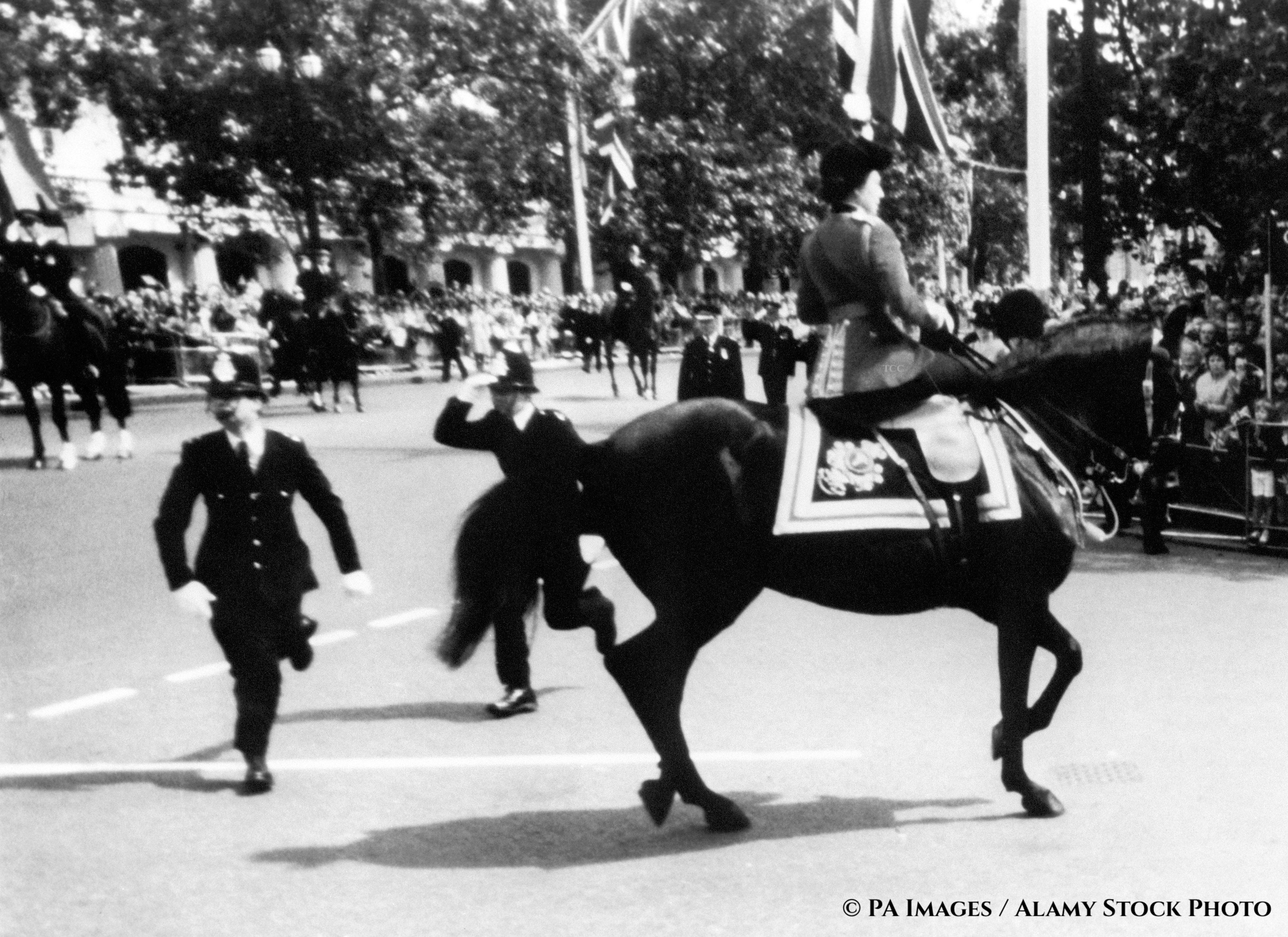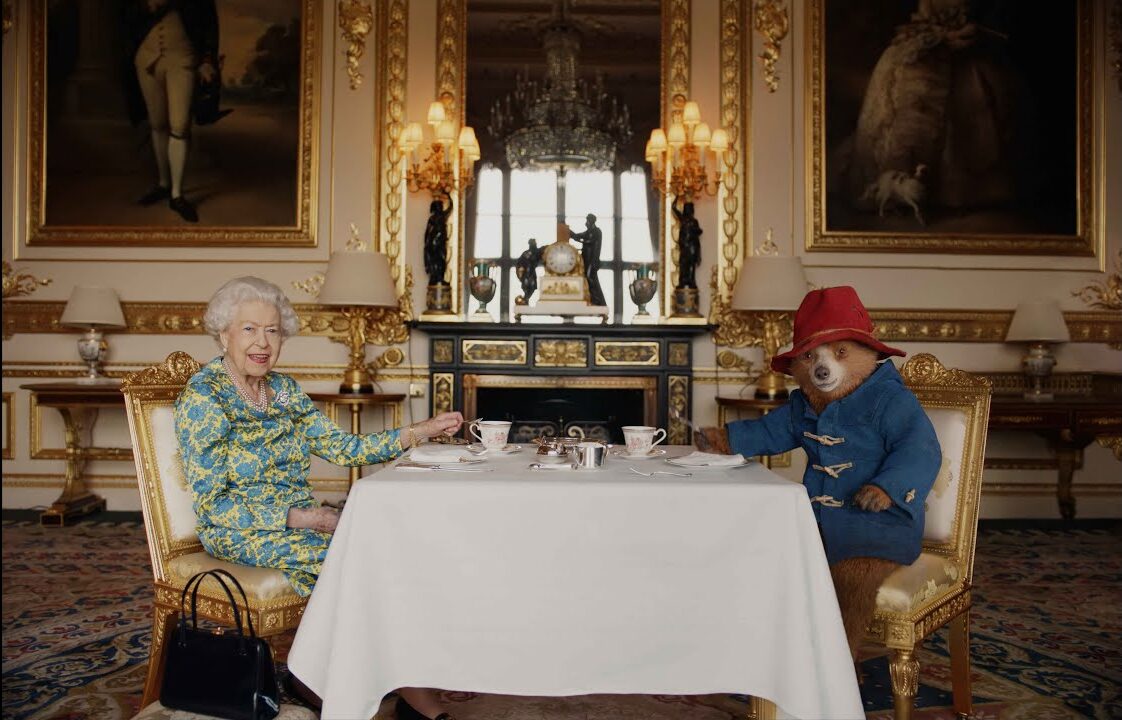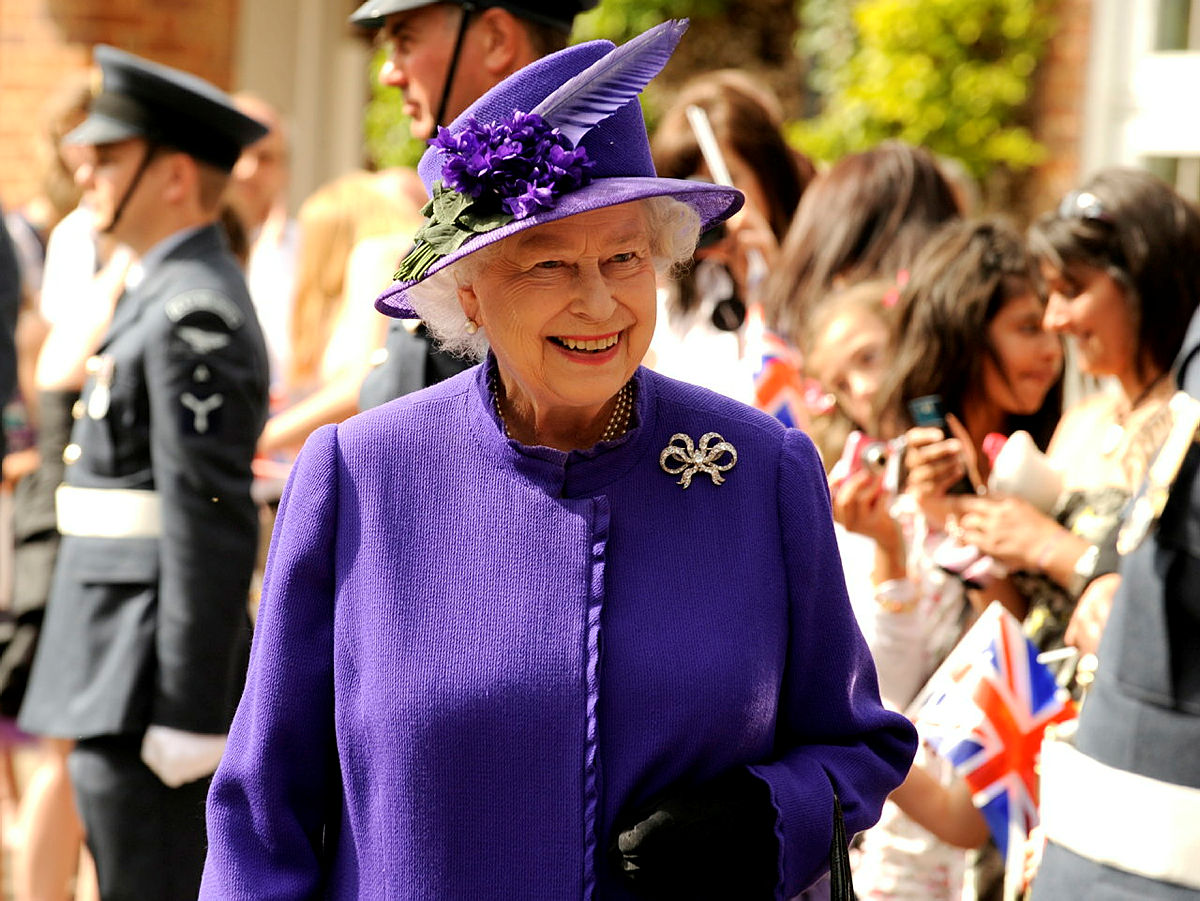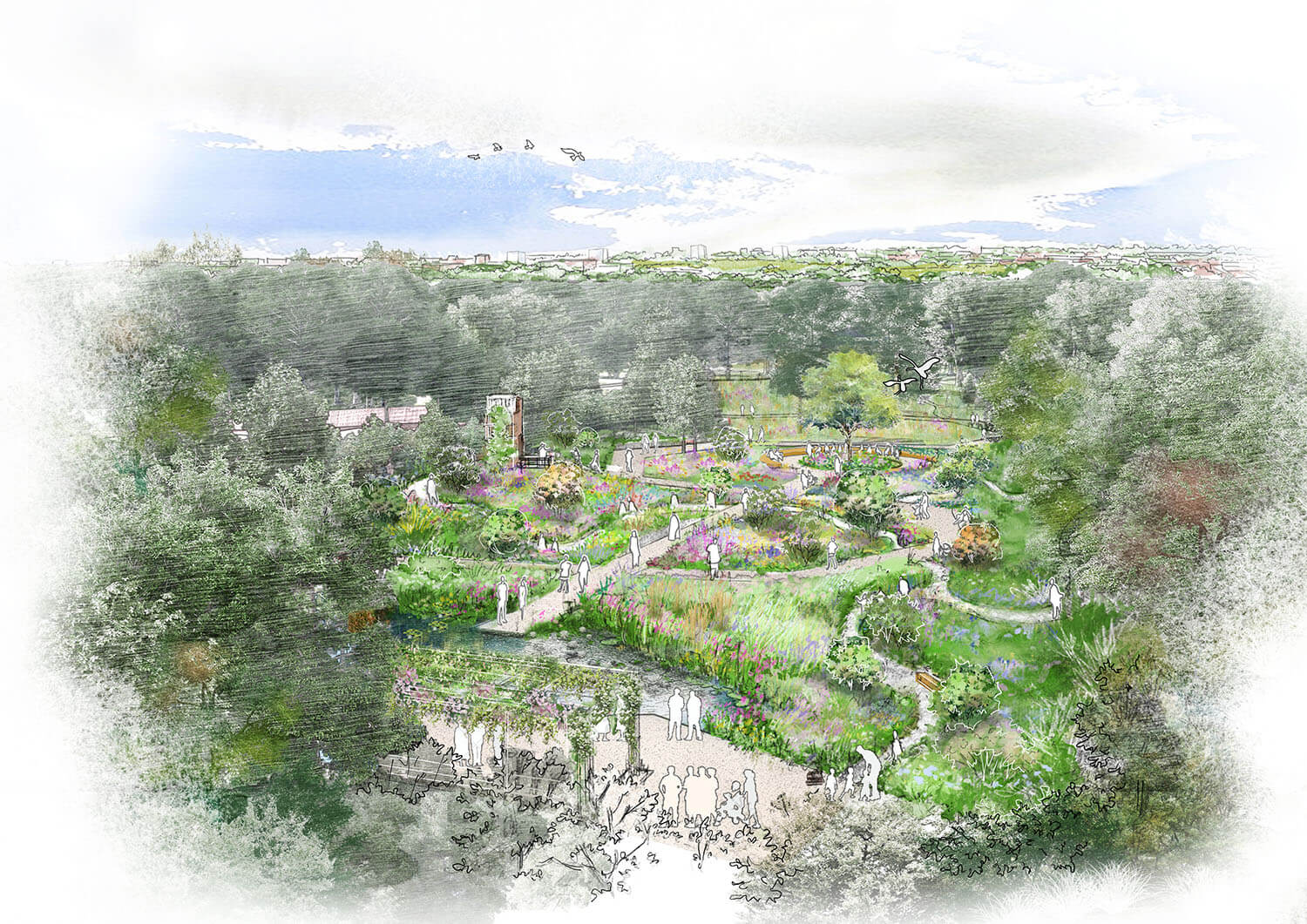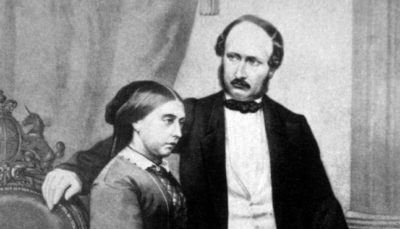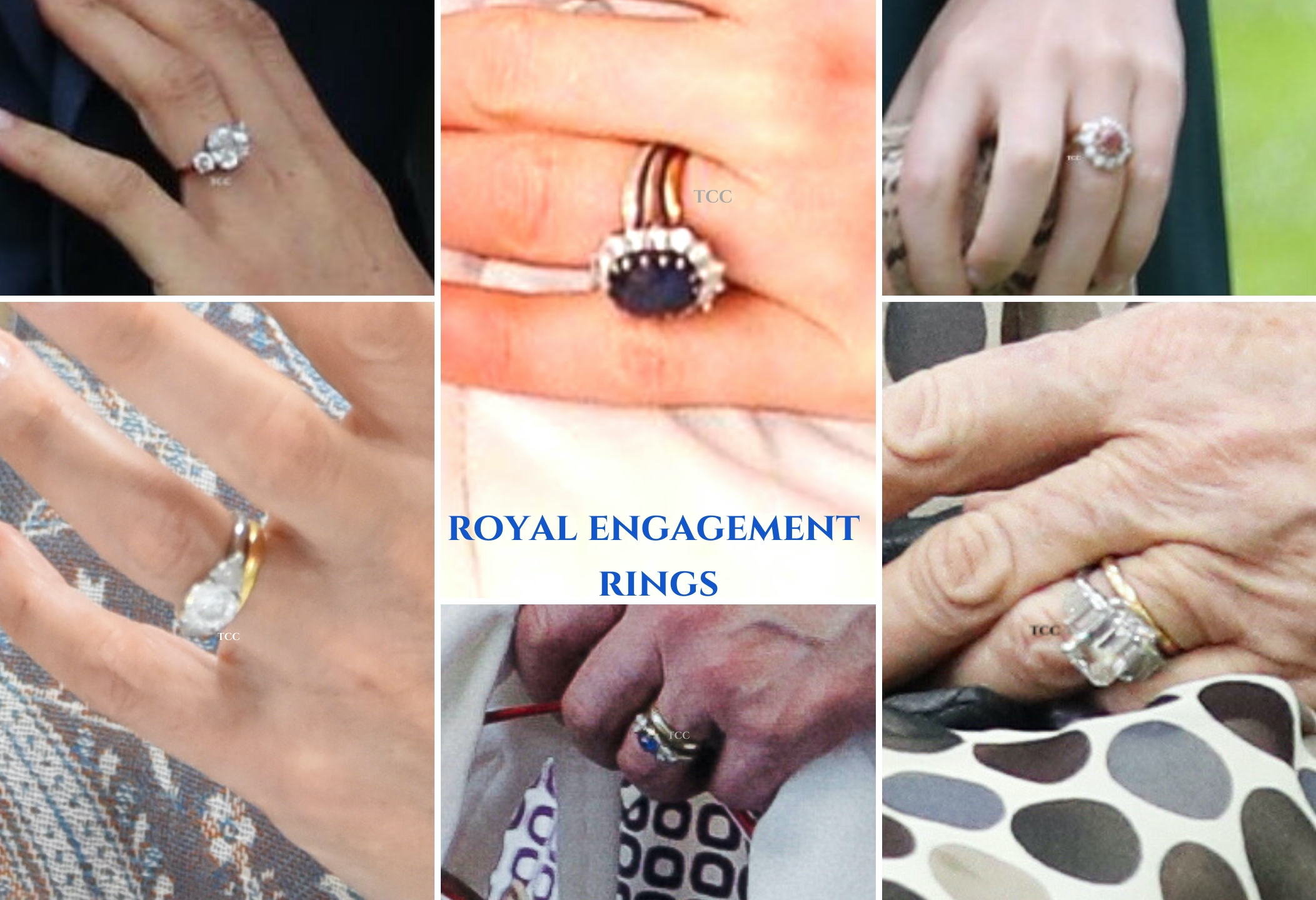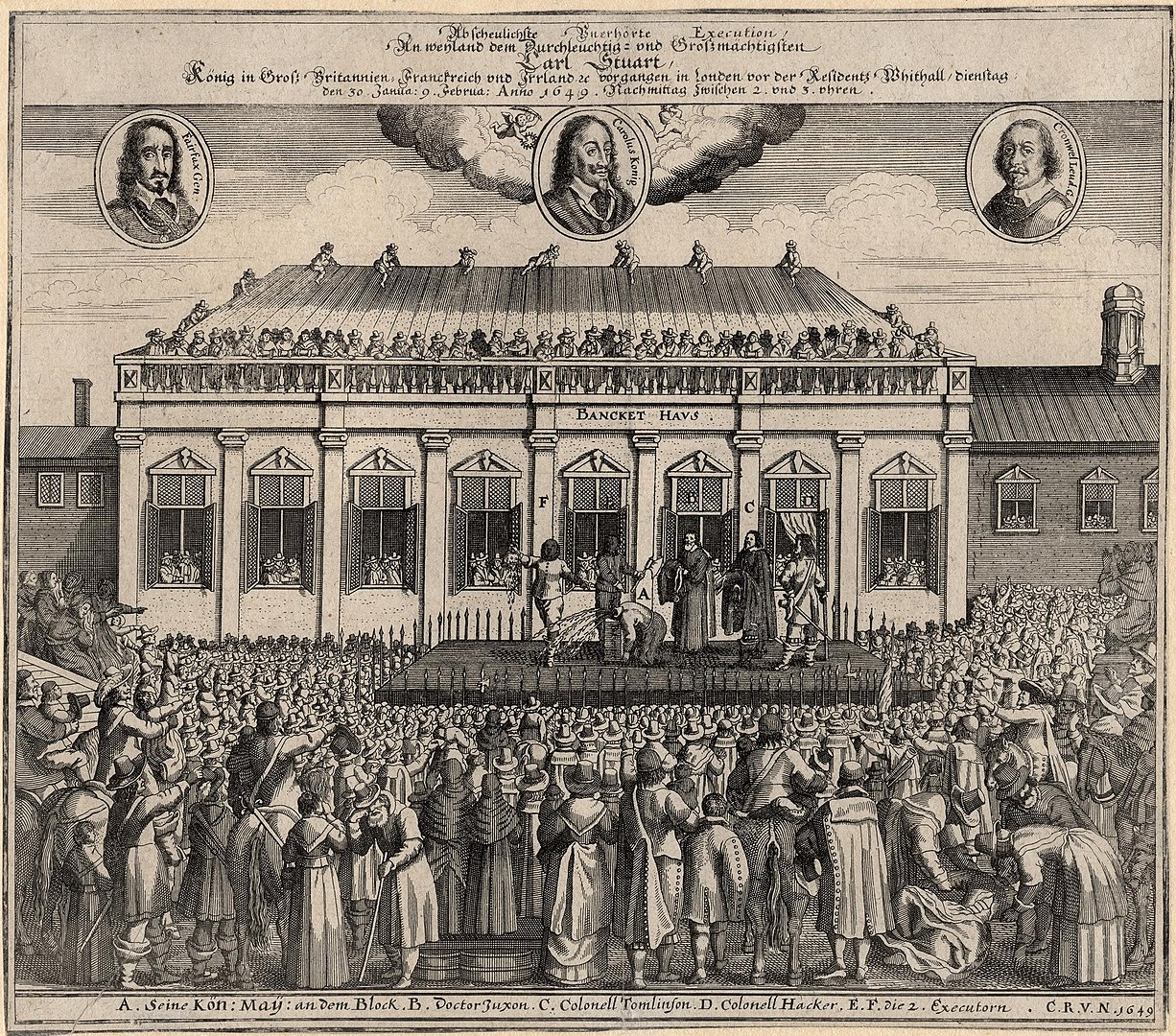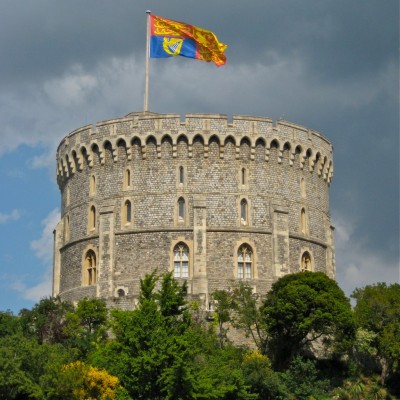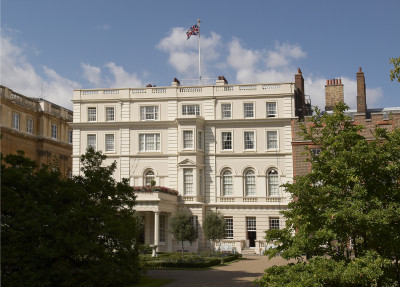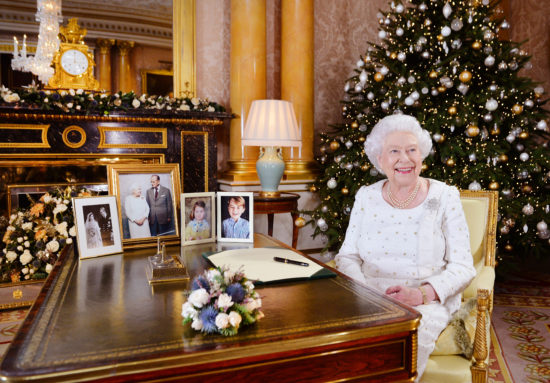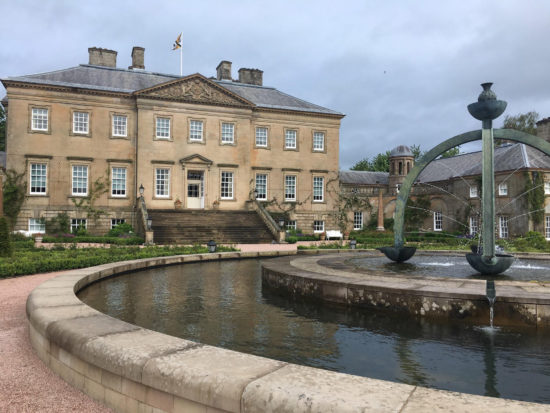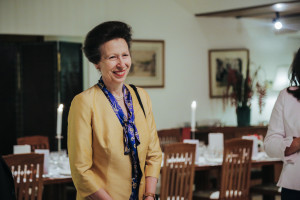Opening at Windsor Castle tomorrow, the Platinum Jubilee exhibition focuses on the 1953 Coronation, with The Queen’s coronation dress and robe of estate taking centre stage.
‘Platinum Jubilee: The Queen’s Coronation’ is located in St George’s Hall, with its shield bedecked ceiling, and the Lantern Lobby, adjacent.
The national celebration saw thee million people lined the processional route in London and many more took part in church services and street parties across the country. An estimated 27 million people watched the service on television, and a further 11 million listened to the radio broadcast.
Visitors enter in the centre of the hall, and turn left to head left, past boards introducing the exhibition and contextualising the spectacular historic event. Then to the Lantern Lobby, you see embroidery examples from Norman Hartnell’s studio.
Hartnell, a research-led designer, offered The Queen eight designs, drawing inspiration from the Madonna, Queen Victoria, and Tudor roses in these designs. The final one – number eight – was her favourite, mimicking numerous elements of her wedding dress, also from the couturier. This design focused on floral emblems representing the UK: a Tudor rose, shamrock, thistle and leek, although Hartnell had originally designed the dress with daffodils.
However, Her Majesty requested that the design use coloured threads, alongside diamantes and beads, and that Commonwealth symbols – of which she is head of state – be included too.
These samplers showcase exquisite needlework, and the final drawing from the designer, which he gifted to the Monarch.
Alongside this, you see five brooches, again reflecting the Commonwealth. These are some of The Queen’s most recognisable pieces, some of which have been loaned across generations.
The Canadian Maple Leaf brooch sits alongside the Australian Wattle brooch and the New Zealand Fern brooch.
In the same case, we see the Sri Lankan opal spray brooch, and the Flame Lily brooch, representing Zimbabwe. This was also the piece Elizabeth wore arriving back in London following her father’s death in 1952.
Four further brooches come from the Diamond Jubilee, gifts to The Queen to mark the occasion in 2012. A trio of daffodils, three shamrocks, two rose gold roses, and three thistles. These are on display for the first time.
Adding to the bejewelled items, we also see the coronation necklace and earrings, made for Queen Victoria in 1858. The necklace features 28 quite large brilliant diamonds and was worn by Queen Alexandra, Queen Mary and Queen Elizabeth (The Queen Mother) at their coronations in 1902, 1911 and 1937 respectively.
The earrings have also been worn by the last three Queens at their coronations.


George IV’s Great George collar sits beside, as part of the regalia worn on the day, outside of the Imperial State Crown, St Edward’s Crown and orb and sceptre. Known as the Marlborough George, the collar was created in 1828, and it is worn by The Queen for the annual Garter Day service and for the State Opening of Parliament.

Coronation Portrait of The Queen by Cecil Beaton; she wears the coronation necklace and earrings (© RCT)
Rounding out the exhibition is the coronation dress and robe of estate, encased in glass at the far end of the hall.
Crafted from white duchesse satin, the dress is richly embroidered with the floral emblems mentioned previously, in a tiered fashion with scalloped layers, the detail is created of gold and silver thread, pastel-coloured silks, seed pearls, sequins and crystals. The Royal Collection estimates it weighs in the region of 5kg.
The full skirt is unusually made, stiffened at the hips to help keep the shape when worn, with very few seams. The skirt actually forms a full circle when laid out.
Hartnells’s dress is supported on a 3D printed internal frame, to ensure the heavy fabric is held up appropriately. It is normally stored in a large box and stuffed with conservation wadding and tissue paper to protect its shape and fabric.
The last time the dress was displayed was in 2013.

The coronation dress is heavily embroidered with floral emblems of the UK and Commonwealth. It was designed by Norman Hartnell (© Victoria Howard)

A close up of the coronation dress at Windsor Castle (© RCT)
The purple velvet robe of estate was made by royal robe-makers Ede & Ravenscroft and was embroidered at the Royal School of Needlework with 18 types of gold thread.
The goldwork embroidery design features the EIIR cypher, and wheat ears and olive branches, which The Queen chose from three designs, symbolising prosperity and peace.
It took 12 embroideresses more than 3,500 hours to complete the work between March and May 1953, and documents show there was a regular dialogue to ensure that the design was achievable.

A close up of the robe of estate embroidery (© Victoria Howard)
A highlight of the display for art fans is the 2.5-metre-tall portrait of The Queen by Sir Herbert James Gunn, which was commissioned to commemorate the coronation. The piece continues a long-standing tradition of formal portraiture of new Monarchs in their coronation regalia, often referred to as ‘State Portraits’.
There is also a digital event for those who cannot make the visit to Windsor. ‘Royal Jewels: A Platinum Jubilee Celebration’ will take place at 19:00 on 28th July, with Caroline de Guitaut, Deputy Surveyor of The Queen’s Works of Art and curator of the Platinum Jubilee display, talking to Carol Woolton, former Jewellery Editor of Vogue. The pair will discuss items of The Queen’s jewellery on display at Windsor Castle and Buckingham Palace this summer.
You can book your tickets to the exhibition (included in castle entry) here.










